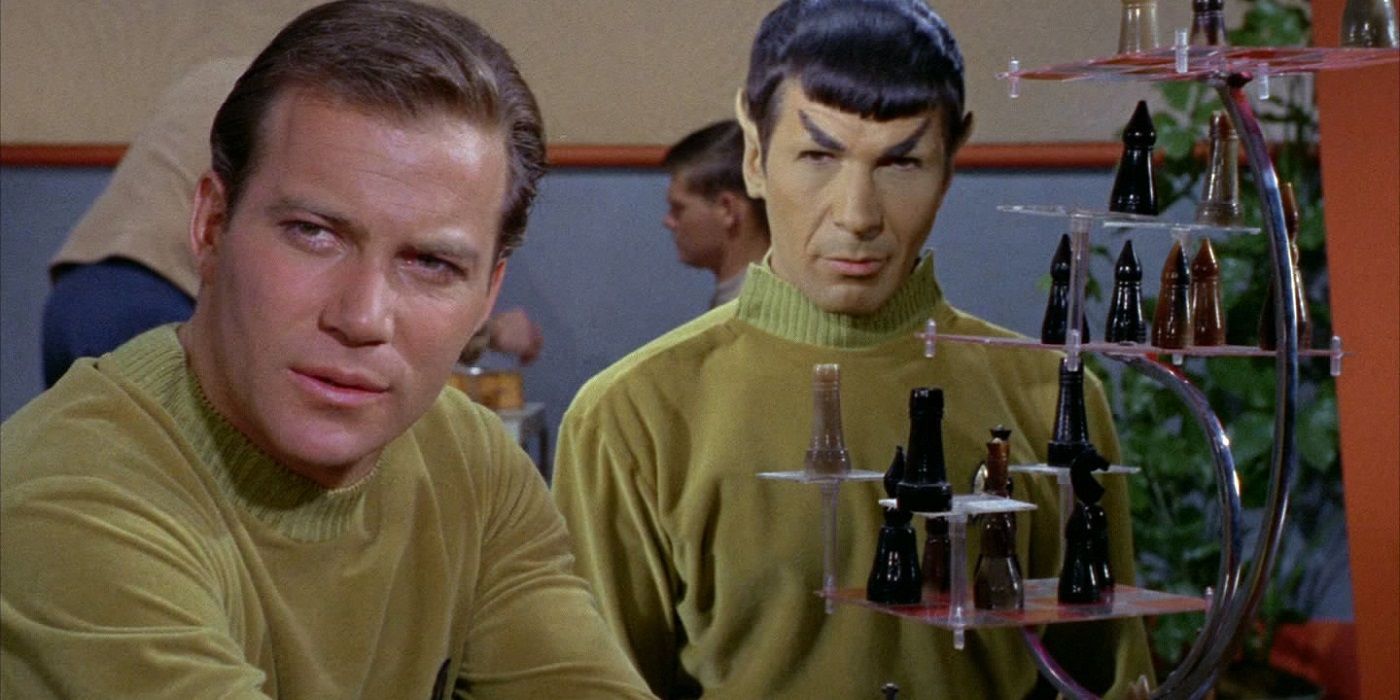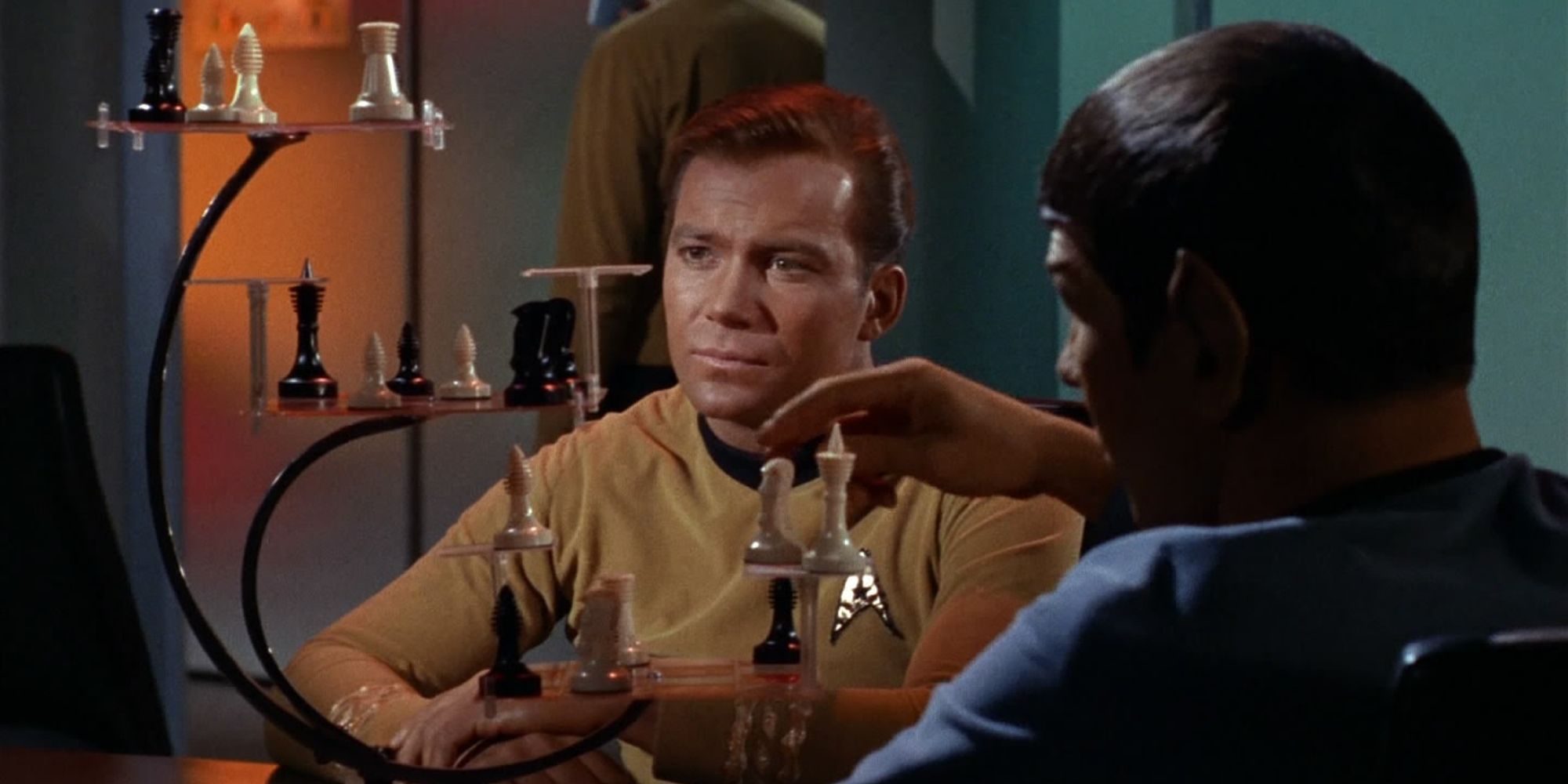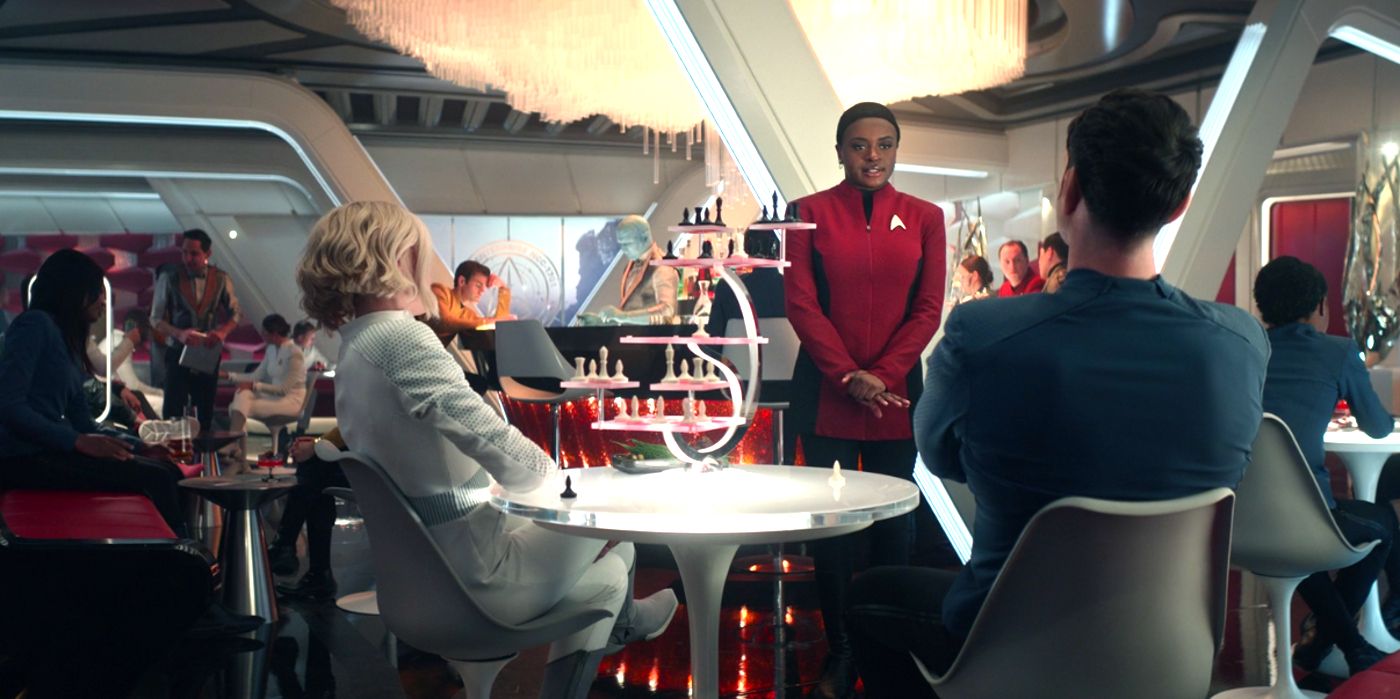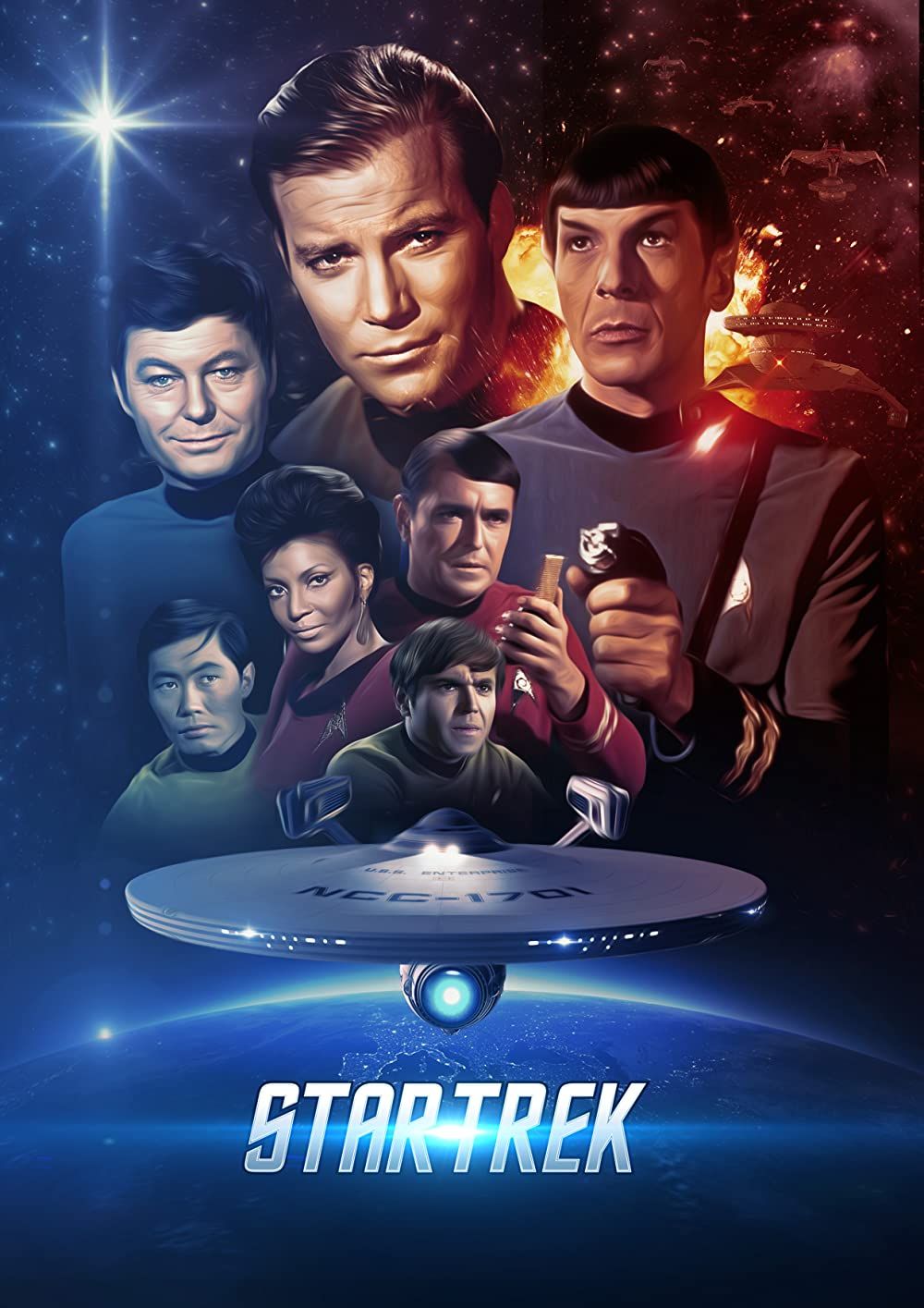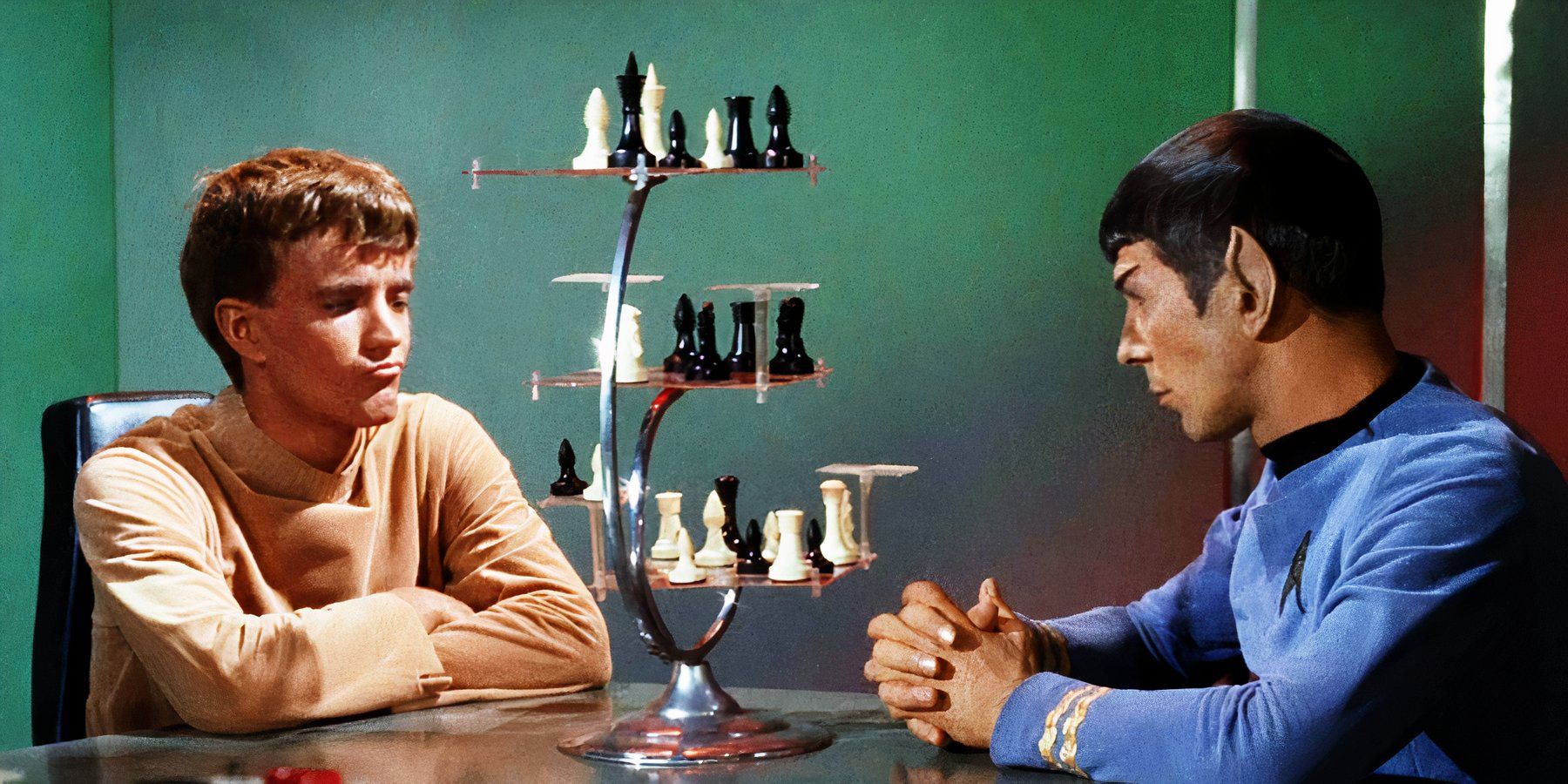
Summary
- Star Trek characters relax with 3D chess, poker, Kal-toh, and darts after saving the galaxy.
- 3D chess popularized in Star Trek was based on a game invented in 1907 by Ferdinand Maack.
- Tri-dimensional chess in Star Trek has extra levels, requires complex strategies, and reflects character traits.
Star Trek characters have been 3D chess since the very first episode of Star Trek: The Original Series, so how does it differ from our own two-dimensional version? It’s a stressful life being a Starfleet officer, and so it’s hugely important to maintain a work-life balance, which is where games can be a perfect way to wind down. 3D chess, poker, Kal-toh, and darts are all games that characters in Star Trek TV shows wind down after a long day saving the galaxy from the Klingon Empire, Borg Collective or Dominion.
Three-dimensional chess was a favorite pastime of the legendary Captain James T. Kirk (William Shatner) and his second-in-command, Spock (Leonard Nimoy). In the show’s successful pilot, “Where No Man Has Gone Before”, the two Star Trek: The Original Series characters are seen playing 3D chess in their very first scene together. While 3D chess was established as a leisure pursuit in the TOS era, the game has appeared in multiple subsequent Star Trek shows.
Related
Star Trek Has Holodecks But Bad Video Games
Star Trek’s holodeck seems to have completely taken the place of video games, as every in-universe video game looks like something from the 1980s.
Why Star Trek’s Chess Is 3D
Interestingly, the Star Trek franchise has popularized, not created, three-dimensional chess. One of the oldest versions of a three-dimensional chess game was invented in 1907 by Ferdinand Maack, whose creation is considered as the classic version of 3D chess. Maack called his game Raumschach, which is German for “Space Chess”, making it ideal for inclusion in Star Trek. The seven platformed chess board in “Where No Man Has Gone Before” deviates from Maack’s classic Raumschach board, which was made of five, 5×5 checkered boards, essentially a 3D cube sectioned off.
The original prop for
Star Trek: The Original Series
was built from existing 3D chess boards, and used pieces from sculptor Peter Ganine’s 1961 chess set.
In 1907, Raumschach believed that the game of chess had to adapt to reflect modern warfare, meaning that the additional boards represented attacks from the air and from the sea. As a result, the idea of playing 3D chess became a colloquial term to describe situations that required complex thought processes. By including 3D chess in Star Trek, production designers were signposting to the audience that humanity in the 23rd century had evolved intellectually, so they played such a complex game for fun.
How Star Trek’s 3D Chess Is Different From Normal Chess
The tri-dimensional chess board in the Star Trek universe has three levels with smaller secondary and tertiary levels branching off. Rather than moving pieces across a flat board as in regular chess, players of 3D chess would move pieces up and down various levels in attempts to defeat their opponents. Kirk once noted that there are an infinite number of countermoves in three-dimensional chess, emphasizing that it was a far more complex game than its two-dimensional counterpart. Potential moves in three-dimensional chess include:
- Bishop, half level right.
- Pawn to queen four, king’s level.
- Pawn to king’s bishop three, queen’s level.
Typically, for Star Trek‘s best Vulcan, Spock viewed 3D chess as a game of logic, which also describes regular chess. Both games rely on each player predicting their opponent’s next moves until checkmate. This principal is the exact same in Star Trek‘s tri-dimensional chess, only with the addition of extra levels, there are more points of attack for each player. 3D chess was a perfect game for Kirk and Spock to play, as their differing strategies reflected their strongest characteristics. Spock’s cold logic vs. Kirk’s illogical approach is what made them one of Starfleet’s greatest pairings.
Chess isn’t the only game that’s played three-dimensionally in
Star Trek
, as crew members can be seen playing 3D checkers in various episodes of
TOS
and was seen in
Star Trek: Deep Space Nine
season 5, episode 6, “Trials and Tribble-ations”
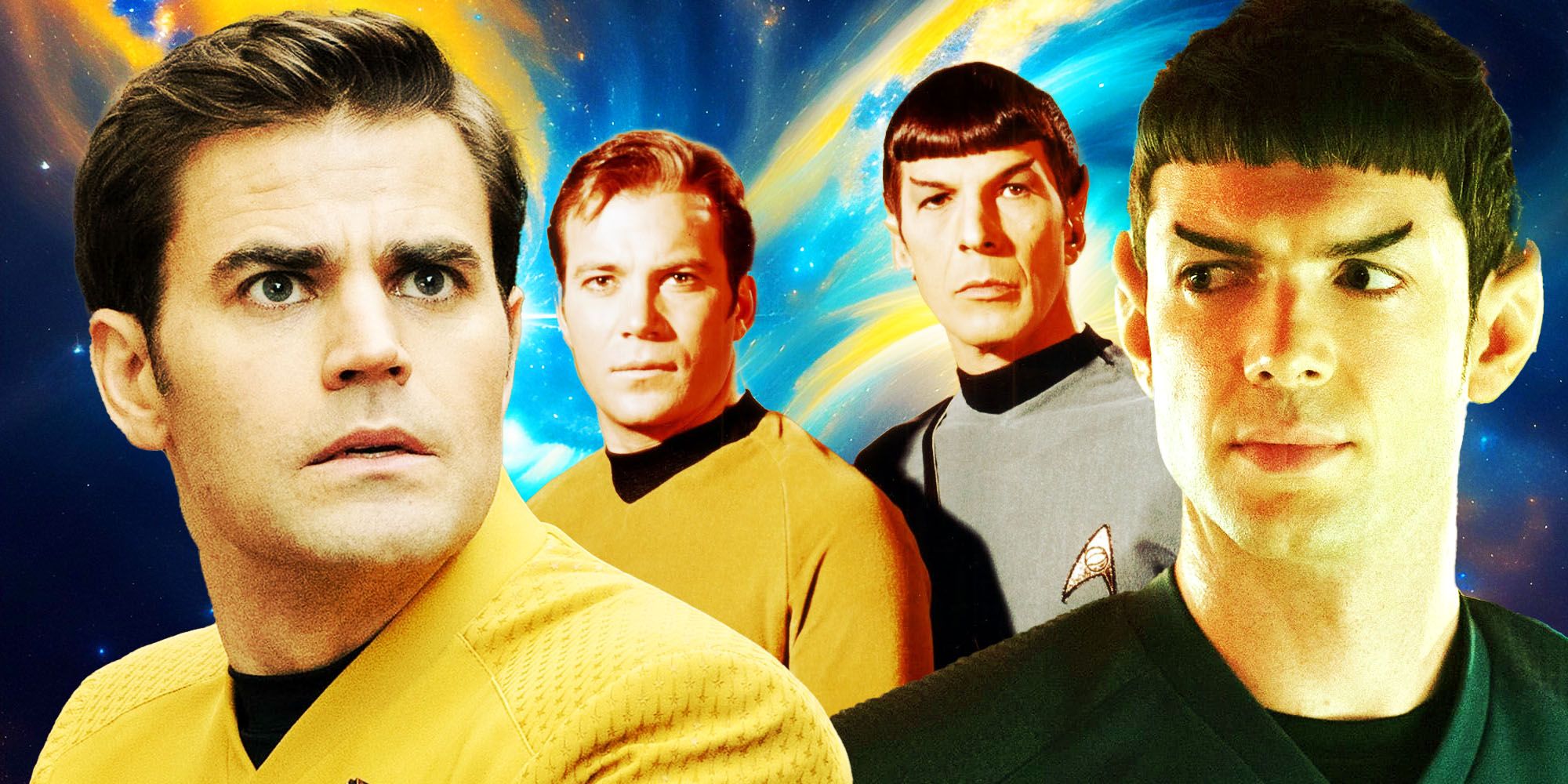
Related
Strange New Worlds Cleverly Sets Up Star Trek’s First Kirk & Spock Scene
James T. Kirk and Spock canonically meet in Star Trek: Strange New Worlds, which also has a callback to their debut in Star Trek TOS’ pilot episode.
How To Play Star Trek’s 3D Chess
3D chess boards have been around for decades, so it’s possible to play the game at home. Fans who want the authentic starship Enterprise experience can buy Star Trek branded tri-dimensional chess boards from a number of retailers, including the Star Trek shop. For obvious reasons, the 3D chess board is set up differently from its two-dimensional counterpart. The black and white pieces each have their separate boards where they are arranged at the start of the game. The King and Queen each have their own levels, with the remaining black and white pieces being assembled on the secondary and tertiary levels, respectively.
Aware that Star Trek fans would likely want to play the game themselves, reference books have duly obliged by providing the rules of the game. For example, Franz Joseph’s Star Trek Star Fleet Technical Manual, explained the rules of 3D chess when it was published in 1975. Read Joseph’s rules for tri-dimensional chess below:
EACH PIECE MOVES EXACTLY THE SAME AS IN CONVENTIONAL CHESS, EXCEPT THAT SUCH MOVES HAVE TRIDIMENSIONAL FREEDOM TO THE EXTENT OF AVAILABLE CONSECUTIVE SQUARES.
16 OF THE 64 SQUARES ARE MOVABLE IN 4 GROUPS OF 4 SQUARES EACH. THEY MAY BE MOVED TO ONE ADJACENT PIN POSITION AT A TIME PROVIDED THEY ARE EITHER BLACK VACANT OR OCCUPIED BY ONLY ONE OF THE PLAYER’S PAWNS, AND SUCH ACTION CONSTITUTES A MOVE IN REGULAR TURN. AN OCCUPIED ATTACK BOARD CANNOT BE MOVED TO AN INVERTED PIN POSITION.
Therefore, if one is good at two-dimensional chess, then they’ll likely be just as good as tridimensional chess, once they’ve mastered tridimensional movement, that is. While players may have mastered the Queen’s Gambit, Star Trek‘s 3D chess requires them to couple that with the Aldabren Exchange if they want to checkmate their opponents. By mastering with the tridimensional concepts of chess in the 23rd century and beyond, fans can wind down just like their heroes, Kirk and Spock, after a hard day at work.
